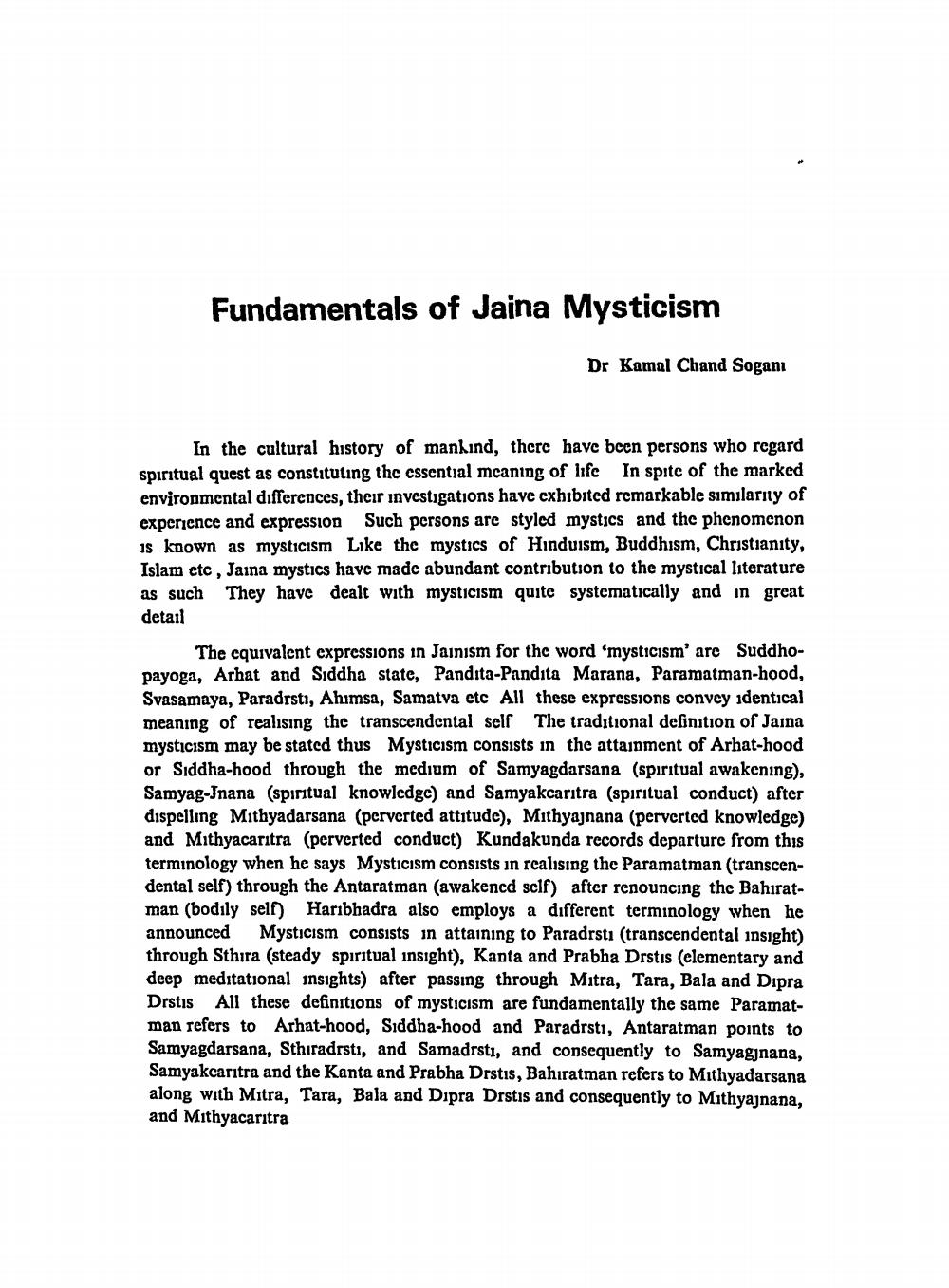________________
Fundamentals of Jaina Mysticism
Dr Kamal Chand Sogan
In the cultural history of mankind, there have been persons who regard spiritual quest as constituting the essential meaning of life In spite of the marked environmental differences, their investigations have exhibited remarkable similarity of experience and expression Such persons are styled mystics and the phenomenon is known as mysticism Like the mystics of Hinduism, Buddhism, Christianity, Islam etc, Jaina mystics have made abundant contribution to the mystical literature as such They have dealt with mysticism quite systematically and in great detail
The equivalent expressions in Jainism for the word 'mysticism' are Suddhopayoga, Arhat and Siddha state, Pandita-Pandita Marana, Paramatman-hood, Svasamaya, Paradrsti, Ahimsa, Samatva etc All these expressions convey identical meaning of realising the transcendental self The traditional definition of Jaina mysticism may be stated thus Mysticism consists in the attainment of Arhat-hood or Siddha-hood through the medium of Samyagdarsana (spiritual awakening), Samyag-Jnana (spiritual knowledge) and Samyakcaritra (spiritual conduct) after dispelling Mithyadarsana (perverted attitude), Mithyajnana (perverted knowledge) and Mithyacaritra (perverted conduct) Kundakunda records departure from this terminology when he says Mysticism consists in realising the Paramatman (transcendental self) through the Antaratman (awakened self) after renouncing the Bahiratman (bodily self) Haribhadra also employs a different terminology when he announced Mysticism consists in attaining to Paradrsti (transcendental insight) through Sthira (steady spiritual insight), Kanta and Prabha Drstis (elementary and deep meditational insights) after passing through Mitra, Tara, Bala and Dipra Drstis All these definitions of mysticism are fundamentally the same Paramatman refers to Arhat-hood, Siddha-hood and Paradrsti, Antaratman points to Samyagdarsana, Sthiradrsti, and Samadrsti, and consequently to Samyagjnana, Samyakcaritra and the Kanta and Prabha Drstis, Bahiratman refers to Mithyadarsana along with Mitra, Tara, Bala and Dipra Drstis and consequently to Mithyajnana, and Mithyacaritra




